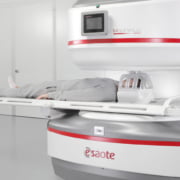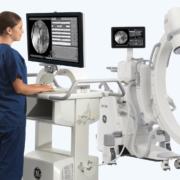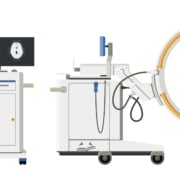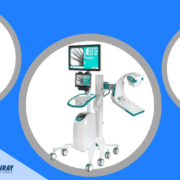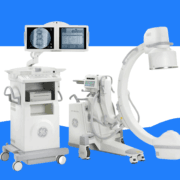The Past, Present, and Future of Medical Imaging Devices
How have advances in medical imaging reshaped modern healthcare? Medical imaging has become a critical part of patient care, from detecting hidden diseases to guiding intricate surgeries. But it wasn’t always this way. The evolution of imaging technology has been a remarkable journey—one that began as rudimentary glimpses into the body and has since transformed into a sophisticated diagnostic marvel. Let’s explore the intriguing history, the growing capabilities, and the exciting future of medical imaging devices.
Understanding the History of Medical Imaging Technology
As we know it today, medical imaging is the culmination of decades of innovation and perseverance. Its importance became evident in the 20th century as scientists and healthcare pioneers pushed the boundaries of what was possible.
A Century of Rapid Progress in Medical Imaging
The history of medical imaging is a fascinating journey of innovation and discovery, marked by milestones that revolutionized how we understand, diagnose, and treat diseases. These advances have transformed medicine, providing clinicians unprecedented ways to visualize the human body.
- 1895: The Discovery of X-Rays
Wilhelm Röntgen’s discovery of X-rays was a pivotal moment in medical science. By uncovering the ability to see inside the human body without invasive surgery, Röntgen opened the door to modern diagnostics. Initially met with awe and curiosity, X-rays quickly became a staple, effectively detecting fractures, infections, and foreign objects. Despite its immense potential, long exposure times, and a lack of safety protocols, which prompted further research into making it safer and more efficient, limited early X-ray technology.
- 1970s-1980s: Emergence of CT Scans and MRIs
The advent of Computed Tomography (CT) and Magnetic Resonance Imaging (MRI) redefined medical imaging. In the early 1970s, CT scans allowed clinicians to capture cross-sectional images of the body using a combination of X-rays and computer processing. This provided unparalleled detail for evaluating complex brain, chest, and abdomen structures.
MRIs, widely available in the 1980s, took imaging further using magnetic fields and radio waves, enabling soft tissue visualization without radiation exposure. MRIs provide detailed insights into conditions such as tumors, neurological disorders, and joint abnormalities, making them invaluable in oncology, neurology, and orthopedics. These technologies improved diagnostic accuracy and drove the development of specialized fields like interventional radiology.
- 1990s-Present: Integration of Digital Imaging
The shift from analog to digital imaging in the 1990s marked another transformative era. Digital Radiography (DR) and Picture Archiving and Communication Systems (PACS) revolutionized image capture, storage, and sharing. Digital imaging eliminated the need for physical film, significantly reducing storage costs and environmental impact while enhancing image clarity and resolution.
Integrating advanced software and artificial intelligence (AI) expanded digital imaging’s potential. AI algorithms can now assist radiologists by identifying anomalies, suggesting diagnoses, and streamlining workflows. The global adoption of telemedicine has allowed digital imaging to reach patients in remote or underserved areas, bridging gaps in healthcare access.
Building the Foundation for the Future
Each of these breakthroughs has advanced healthcare and laid the groundwork for the innovations we see today. From portable ultrasound devices to AI-driven imaging systems, the evolution of medical imaging continues to make diagnostics faster, more accurate, and more accessible. As we look to the future, technologies like 3D imaging, molecular imaging, and augmented reality-guided procedures hold immense promise, ensuring that the story of medical imaging is far from complete.
The Role of Deep Tissue Imaging
Deep tissue imaging sits at the core of modern medicine. Enabling detailed visualization of tissues, organs, and systems provides unmatched clarity that traditional methods cannot achieve.
Why It’s Important
Deep tissue imaging isn’t just about seeing the unseen. It’s about understanding the human body’s complexities to deliver accurate diagnoses and effective treatments. This technology guides physicians through procedures like tumor resections, organ transplants, and trauma surgeries with greater precision than before.
For instance:
- Cancer Detection: PET scans pinpoint abnormal tissue growth early, improving survival chances.
- Neurological Disorders: MRI scans map intricate brain activity, aiding the treatment of conditions like epilepsy or multiple sclerosis.
- Joint Health: Ultrasound-guided imaging delivers precise diagnostics for musculoskeletal injuries, helping athletes and patients recover faster.
Deep tissue imaging doesn’t just uncover problems—it offers a window into solutions, improving patient outcomes and quality of life.
The Present: Advances in Medical Imaging Technology
Today’s medical imaging devices are more advanced than ever, packed with cutting-edge capabilities that only a few decades ago felt like science fiction.
The State of Modern Medical Imaging
Innovative imaging technologies now drive decision-making across hospitals and clinics worldwide. Modern CT scanners deliver high-resolution images in seconds, while portable ultrasounds bring imaging to remote or intensive care environments. Systems built with AI capabilities enable healthcare professionals to optimize workflows, reduce diagnostic times, and enhance accuracy.
At the center of this evolution are companies like ImagPros, providing turnkey imaging solutions to meet the diverse demands of healthcare providers. Their dedication to customer satisfaction ensures access to high-quality imaging devices that integrate seamlessly with modern practices, including refurbished and custom-built systems tailored to specific needs.
Expert Service and Customer Satisfaction
With over 50 years of combined experience, ImagPros knows that optimal imaging solutions require more than just devices—they need support. From equipment implementation and training to state compliance and financing, our end-to-end services reflect a commitment to excellence in the field.
Looking Toward the Future
The future of medical imaging will be even more exciting as emerging trends and technologies advance diagnostics and treatments to previously unimaginable heights.
Next-Generation Technologies
- AI Integration
Artificial intelligence is at the forefront of innovation, rapidly analyzing imaging data to enhance diagnostic accuracy. AI can identify conditions like heart disease or lung cancer earlier and more precisely than traditional methods allow.
- 3D and 4D Imaging
Three-dimensional imaging is already reshaping surgical planning, while 4D imaging focuses on real-time dynamic motion, aiding fields like cardiology and orthopedics.
The Potential Impact on Healthcare
These advancements promise faster diagnostics, personalized treatments, and reduced healthcare costs. For example, AI-powered imaging could lessen the burden on radiologists, allowing medical professionals to focus on critical cases and deliver more timely care. For patients, this means better health outcomes and fewer diagnostic errors.
Medical Imaging as the Backbone of Modern Healthcare
Medical imaging has become an indispensable part of healthcare, bridging the gap between symptom onset and life-saving treatment. From its humble beginnings to its current state as a sophisticated technology field, imaging devices have redefined the art of medicine.
Looking ahead, companies like ImagPros will continue to play a vital role, leading the charge with innovative solutions that empower healthcare providers. With the right tools and partnerships, the future of medical imaging holds incredible promise.
Interested in learning how high-quality imaging devices can support your practice?
Contact ImagPros to explore state-of-the-art imaging solutions and see how we can transform your diagnostics and patient care approach.





